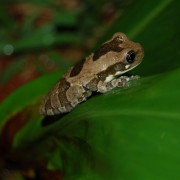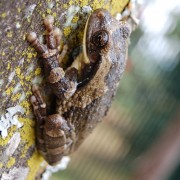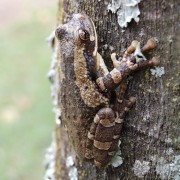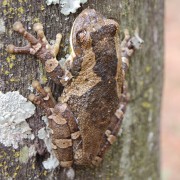Biodiversity
 Veined Treefrog
Trachycephalus typhonius | Laurenti, 1758
Veined Treefrog
Trachycephalus typhonius | Laurenti, 1758
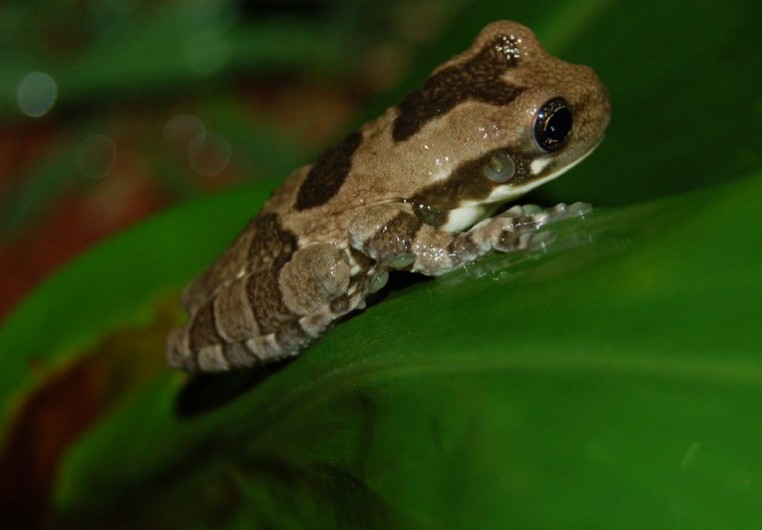
Characteristics: Large species measuring about 9.0cm in length. Its color ranges from dark green to moss green, varying with gray or light-color spots and stripes on its back and paws. Its belly is light-colored and its thighs marked by transversal stripes. Males may be slightly smaller than females. They have many small, conspicuous glands on their backs and on the sides of their bodies through which secrete a sticky, milk-like substance. They are considered rare because of how hard they were to be spotted, for their environmental particularities and because of their cryptic habits (camouflage in the environment).
Distribution: Mexico, Central America, from the Amazon Basin to Colombia, Ecuador, Peru, Venezuela, Guyana, Paraguay, northeastern Argentina, and Trinidad and Tobago. In Brazil, this species is spread throughout the Southeastern and Southern regions in the states of Goiás, Mato Grosso do Sul, São Paulo and Paraná.
Habitat: Forest to open formations in riparian and gallery forests.
Habits: Crepuscular, nocturnal, arboreal and prefers more shaded areas, such as forest edges, found in medium to tall vegetation near streams and puddles.
Diet: Insects and arthropods.
Breeding: Oviparous, this frog uses puddles to lay its eggs in, which are covered in gelatinous masses.
UFRA: Species seen in Restored native forests, between the Organic Sugarcane Fields and Wetlands with Herbaceous Plants.




